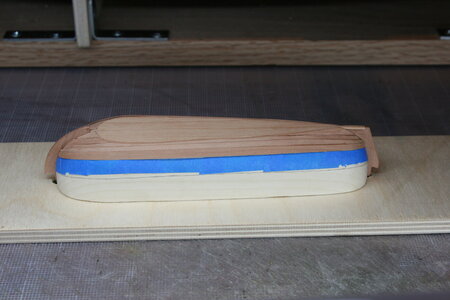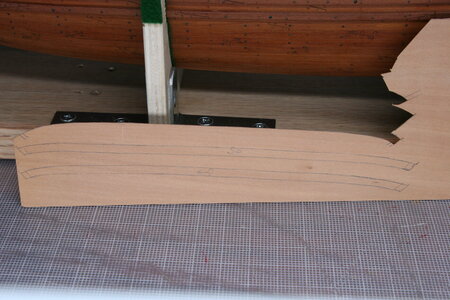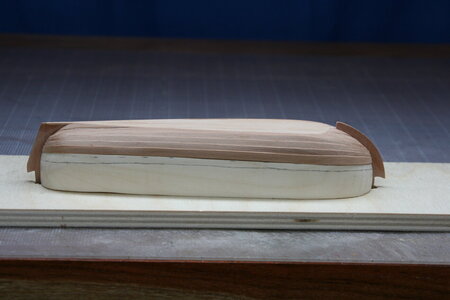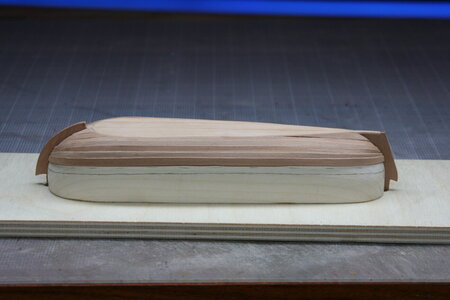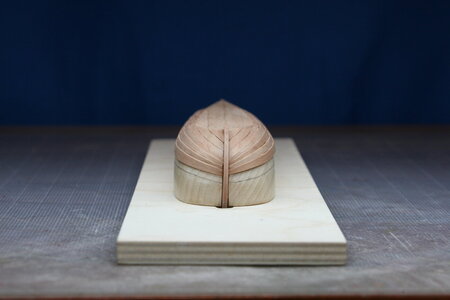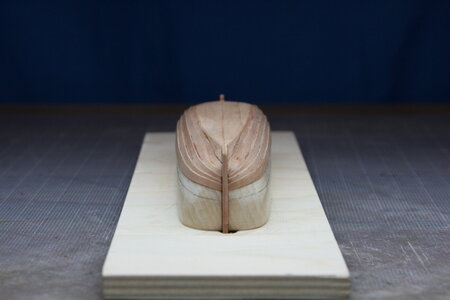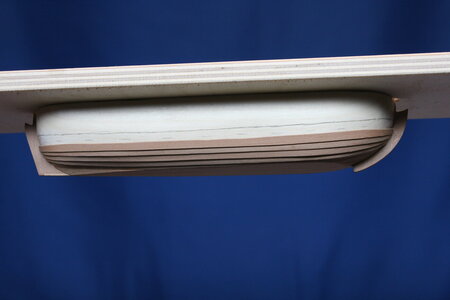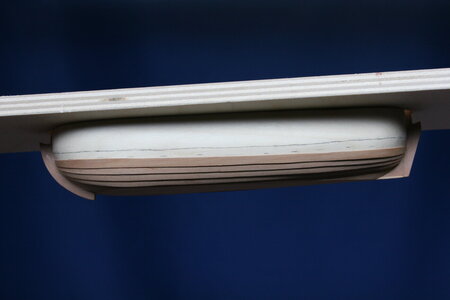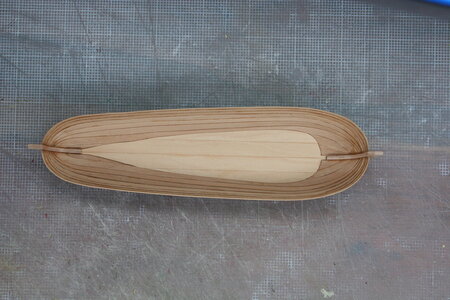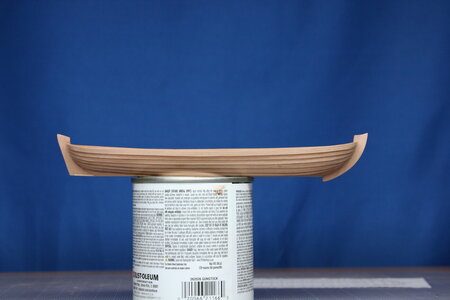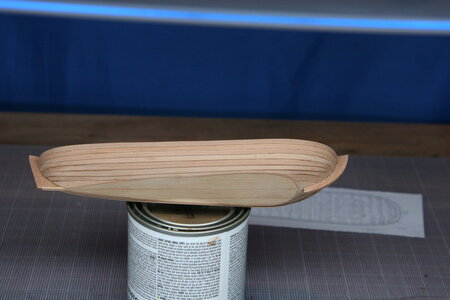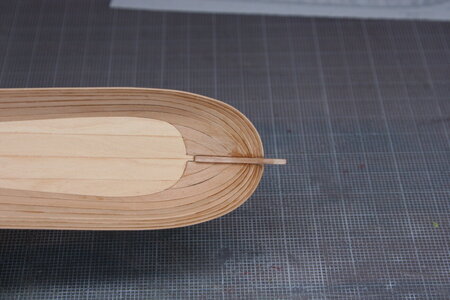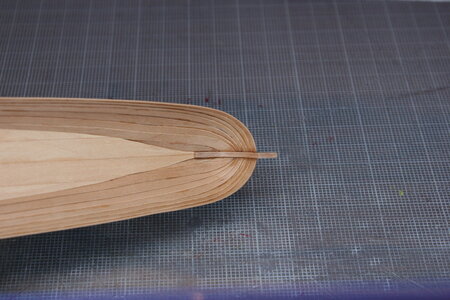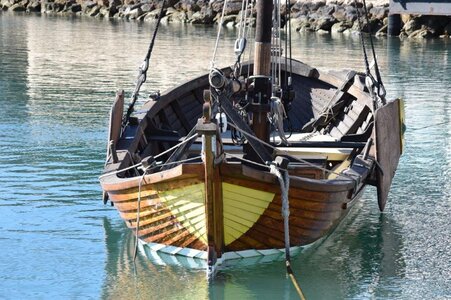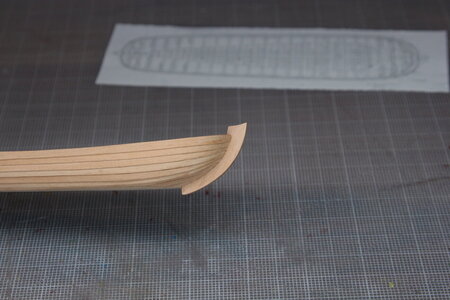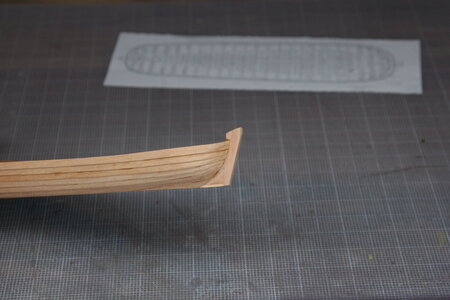A bit of significant progress today on the little boat...
With the flat bottom made it was time to create the fore and aft partial keels. I simply made a template from cardstock and then cut the keels from 2mm pear sheets using a scroll saw. Here they are fitted to the slots I previously created in the hull template:
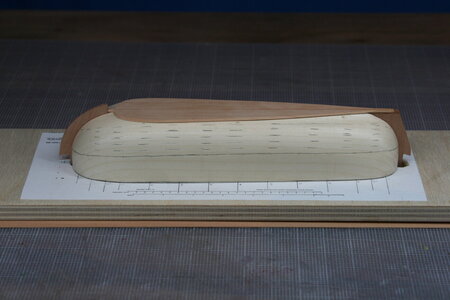
And then came the hard part - planking the hull to merge seamlessly with the flat bottom (how many of you knew I should not be attempting my first scratch build on a ship with a flat bottom??? ). Well, after several aborted attempts I managed to fabricate something worth keeping:
). Well, after several aborted attempts I managed to fabricate something worth keeping:
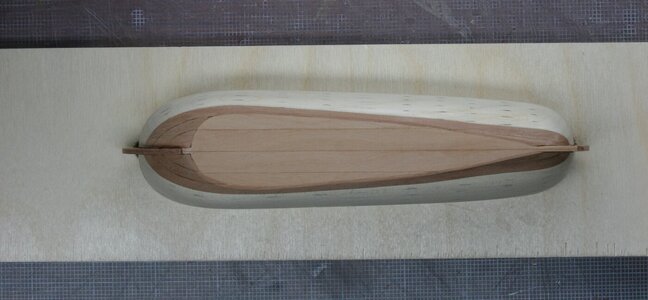

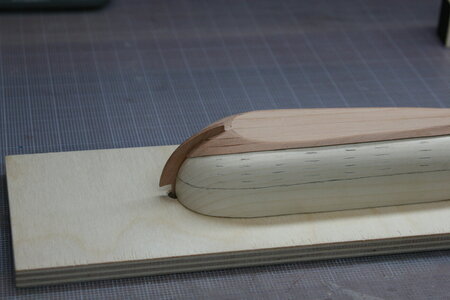
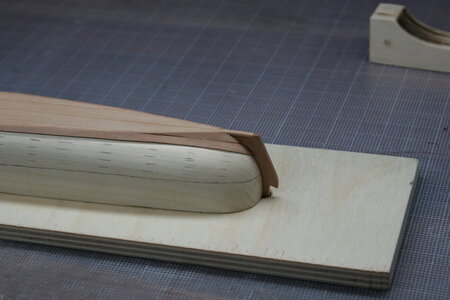
Not my best work but acceptable. Note that from this point forward the hull will be planked using an overlapping (clinker-style) pattern - at least if I can manage that.
I am using veneer sheets (0.6 mm) for the hull planking (necessarily spiled because of the very round ends) making this little boat quite delicate. I did a trial using 1 mm stock but the clinkering was out of scale if left full thickness. I tried to cut a rabbet on the back side (lower edge) of the upper plank in order to reduce the clinkering - but I couldn't create a clean rabbet.
If the hull would only be seen from the outside, I think it would have worked - but the inside of the hull will be fully visible. Remember, every piece is spiled so I am not working with straight stock... I'm sure it's possible to cut a rabbet on curved pieces using a mill but my skills aren't there yet.
Anyway, I'm hoping the 0.6 mm veneer will look good inside and out...
Thanks for stopping by!
With the flat bottom made it was time to create the fore and aft partial keels. I simply made a template from cardstock and then cut the keels from 2mm pear sheets using a scroll saw. Here they are fitted to the slots I previously created in the hull template:

And then came the hard part - planking the hull to merge seamlessly with the flat bottom (how many of you knew I should not be attempting my first scratch build on a ship with a flat bottom???




Not my best work but acceptable. Note that from this point forward the hull will be planked using an overlapping (clinker-style) pattern - at least if I can manage that.
I am using veneer sheets (0.6 mm) for the hull planking (necessarily spiled because of the very round ends) making this little boat quite delicate. I did a trial using 1 mm stock but the clinkering was out of scale if left full thickness. I tried to cut a rabbet on the back side (lower edge) of the upper plank in order to reduce the clinkering - but I couldn't create a clean rabbet.
If the hull would only be seen from the outside, I think it would have worked - but the inside of the hull will be fully visible. Remember, every piece is spiled so I am not working with straight stock... I'm sure it's possible to cut a rabbet on curved pieces using a mill but my skills aren't there yet.
Anyway, I'm hoping the 0.6 mm veneer will look good inside and out...
Thanks for stopping by!
Last edited:





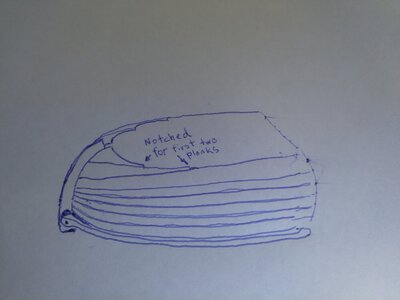
 ). No one will ever see it anyway (except you and the dozen people following this build on the forum!).
). No one will ever see it anyway (except you and the dozen people following this build on the forum!).



